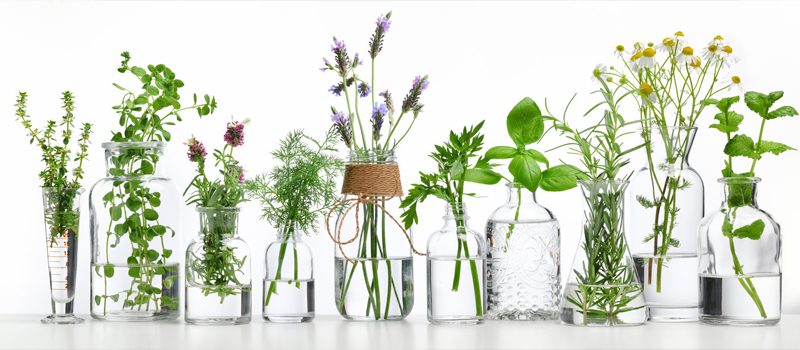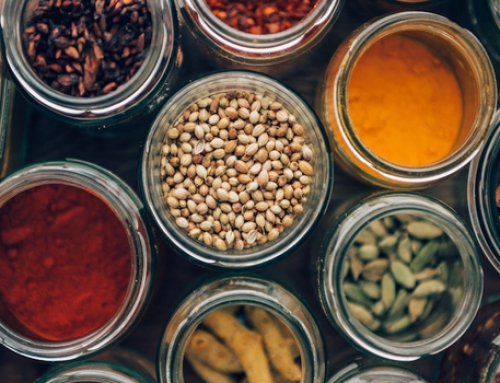For many, the time has come to plan how you can get away from all those synthetic drugs being put out by Big Pharma. Granted, there are many out on the market that has incredible benefits and low side effects attached to them. Those, however, are the exception rather than the usual. There are a great many being prescribed by medical professionals that can do more harm than good.
Here’s another avenue that you can consider when it comes to your health and well-being, that has been passed down from generation to generation and is, unfortunately, threatening to be left by the wayside by today’s attitudes towards the natural methods.
That being said, giving the overwhelming interest in recent articles about essential oils, I decided to revisit the topic of an herbal healing garden. My interest is a bit self-serving in that I am in the process of rethinking my own garden and while I grow an abundance of rosemary, lavender, and peppermint, this year will be an ideal time to replace some tired shrubs with plants that will work for me. Healing herbs will fit the bill quite nicely.
Herbs have been used for centuries to soothe and heal. Herbals have long been used as the basis of traditional Chinese herbal medicine, with usage dating as far back as the first century CE and before. Medicinal use of herbs in Western cultures has its roots in the Hippocratic (Greek) elemental healing system, based on a quaternary elemental healing metaphor.
With such a long history of use, it makes perfect sense that you would want to include a selection of herbs in your aquaponic garden.
Healing Herbs for the Healing Garden
Lavender: Has a number of uses that can cross all areas of your life. Of course, it helps out in its fragrance and is included in many household products.
A tea made from lavender has many uses with one of the foremost being its ability to have a calming effect on a person’s mind and body. To that end, lavender can promote a sense of well-being and alleviate stress. It is also useful for dealing with various gastrointestinal issues such as upset stomachs and flatulence.
Because it is a strong antiseptic, lavender tea, when applied topically, can help heal cuts, wounds, and sores. It can also be used to mitigate halitosis.
Lemon Balm: Lemon balm or Melissa Officinalis is a member of the mint family. Considered a calming herb, it has been used as far back as the Middle Ages to reduce stress and anxiety, promote sleep, improve appetite, and ease pain and discomfort from indigestion. Even before the Middle Ages, lemon balm was steeped in wine to lift the spirits, help heal wounds, and treat venomous insect bites and stings.
As with many other herbs in your healing garden, lemon balm promotes relaxation and a sense of calm.
Rosemary: Long ago, rosemary was known as ‘the herb of remembrance.’ It is known to help sharpen mental clarity and stimulate brain function. You might recall that many statues of the ancient Greeks and Romans show men wearing sprigs of rosemary on their heads – signifying mental acuity.
The needles of the delightfully fragrant rosemary plant can be used in a tea to treat digestive problems. The same tea can also be used as an expectorant and as a relaxing beverage that is helpful for headaches. Other healing uses include improving memory, relieving muscle pain and spasms, stimulating hair growth, and supporting the circulatory and nervous systems.
Feverfew: This perennial is a member of the sunflower family and has been used for centuries in European folk medicine as a remedy for headaches, arthritis, and fevers. The name feverfew comes from a Latin word meaning “fever reducer.”
Its many uses include easing headache pains – especially migraines. This is done by chewing on the leaves. A tea made from the leaves and flowers is said to relieve the symptoms of arthritis.
German Chamomile: Chamomile is one of the most popular herbs in the Western world. Its flower heads are commonly used for infusions, teas, and salves. These in turn can be used to treat indigestion, anxiety, and skin inflammations. As a tea, it serves as a mild sedative to help with sleep.
Sage: Did you know that the genus name for sage is “salvia” which means “to heal”? In the first century C.E. Greek physician Dioscorides reported that sage stopped bleeding of wounds and cleaned ulcers and sores. He also recommended sage juice in warm water for hoarseness and cough.
In modern times, sage tea is used to soothe mouth, throat, and gum inflammations. This is because sage has excellent antibacterial and astringent properties.
Thyme: Back during medieval times, thyme was given to knights before going into battle. The purpose was to infuse this manly man with vigor and courage.
These days, thyme is used to relieve coughs, congestion, and indigestion discomfort. This perennial is rich in thymol, a strong antiseptic, making thyme highly desirable in the treatment of wounds and even fungus infections. Thyme is a perennial that does well, even in cooler, Pacific Northwest climates.
Basil: People don’t usually think of basil as a healing herb and yet traditionally, it is called the “king of herbs”. It is used medicinally as a natural anti-inflammatory and is thought to have mild antiseptic functions. Some healing uses are for flatulence, lack of appetite, nausea, and cuts and scrapes.
Peppermint: Peppermint has a long tradition of medicinal use. Archaeological evidence places its use far back as ten thousand years ago. It is commonly used to soothe or treat symptoms such as nausea, vomiting, abdominal pain, indigestion, irritable bowel, and bloating, and more.
The leaves and stems contain menthol which in addition to use medicinally, is used as a flavoring in food and a fragrance in cosmetics. The plant is prolific, growing well in moist, shaded areas as well as in sunnier locations. The roots emit runners that can quickly overtake the garden so most gardeners prefer to plant peppermint in pots.
The easiest way to acquire a peppermint plant? Find a friend or neighbor that is growing peppermint to break off a stem. Place it is a glass of water and in a very short period of time, roots will form and you will have your own peppermint start.
How Do I Get Started?
With so many herbs to choose from, where do you start? I just mentioned a few of them above. A lot will depend on the amount of space you have, the climate, and the availability of seeds, starts, or cuttings. My recommendation is that you start with three or four herbs that appeal to you from a healing perspective. Many can be grown in pots on a porch or deck so if space is a problem, you can start modestly.
How to Make an Herbal Tea
The process of making a pot of herbal tea is in itself healing. Perhaps that has something to do with the proactive effort involved in doing something positive for one’s own self and well-being. And luckily, brewing an herbal tea is easy.
To make an herbal tea, first, bring some cool water to a boil. While waiting for the water to boil, fetch a non-metal container that will be used to brew the tea. A quart mason jar works nicely for this purpose. You do not want to use a metal container since the metal may interfere with the purity and taste of the tea.
Add 2 tablespoons of fresh (or 1 tablespoon of dried herb or crushed seed) to the empty pot or jar for each cup of water. Then, and this is the important part, add an extra 2 tablespoons of fresh (or 1 tablespoon of dried) herbs “for the pot.” So, for example, if you are making 2 cups of hot tea, you would use 6 tablespoons of fresh herbs or 3 tablespoons of dried herbs.
Pour the boiling water over the herbs and let them steep, covered, for about 5 minutes give or take. There is no exact time since everyone’s strength preference is different. When ready, strain the herbs and pour the tea into a cup. At this point, you may want to garnish your heavenly – and healing – a cup of tea with honey, citrus fruits, or additional herb springs.
For iced tea, increase the number of herbs in the basic recipe by 1 1/2 to allow for dilution from the melting ice.
Overall TakeAway
This is only a small sliver of the herbs that are available for us to use, naturally, as they have been intended for us to use. We all need to have our own herbal garden, with the plants that could best help us. That means we need to be in tune with what our body may need, and have the knowledge of what plant and in which form (powder, tea, or salve included) would be best for absorption.
Let us all be more proactive in taking care of this mortal coil for as long as we can!
Also note this disclaimer: I am not a health care practitioner and anything I write should not be construed as medical advice. If you have a serious condition, consult a physician or nurse practitioner if one is available. And if not, consult a reliable reference






